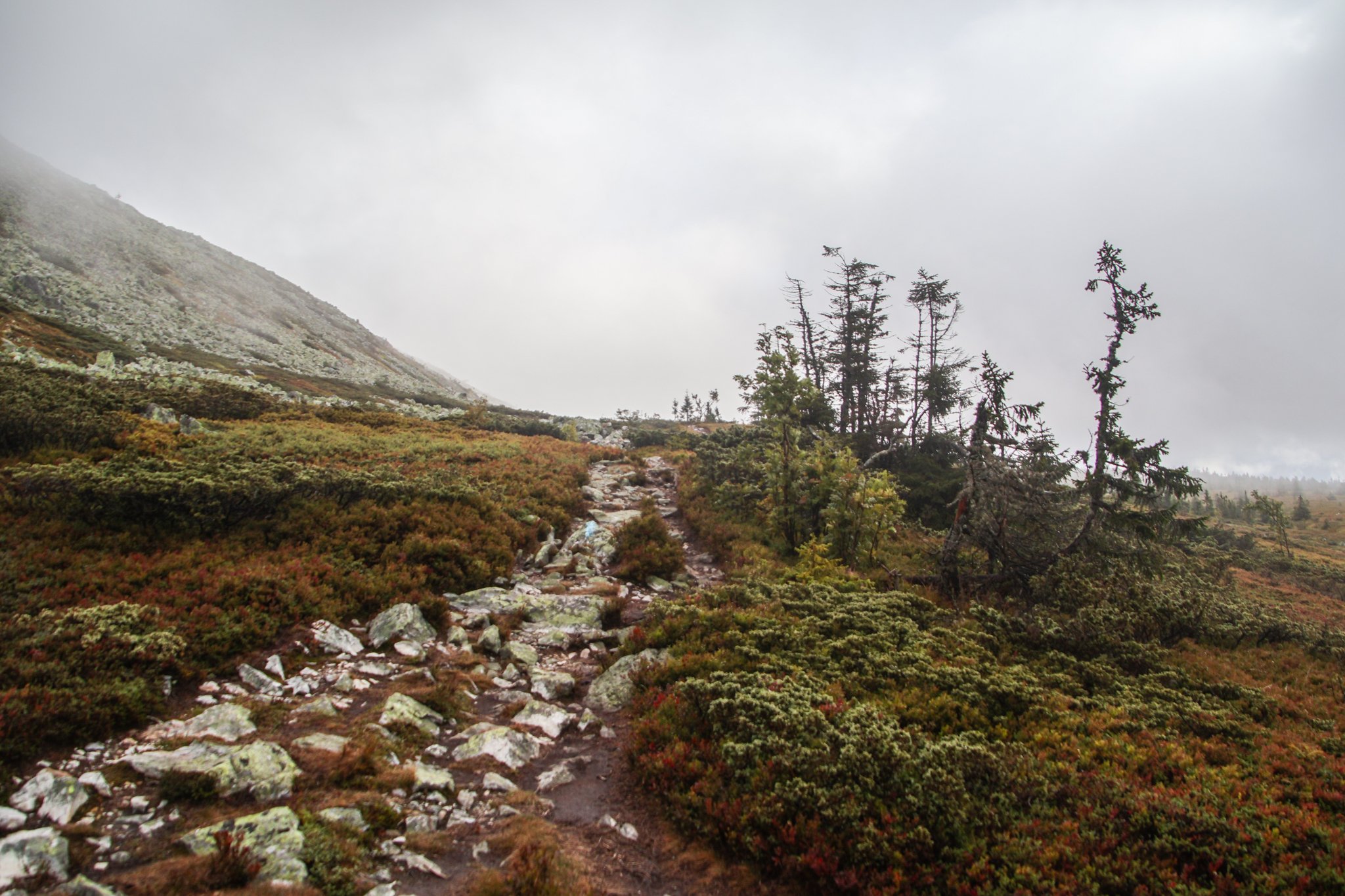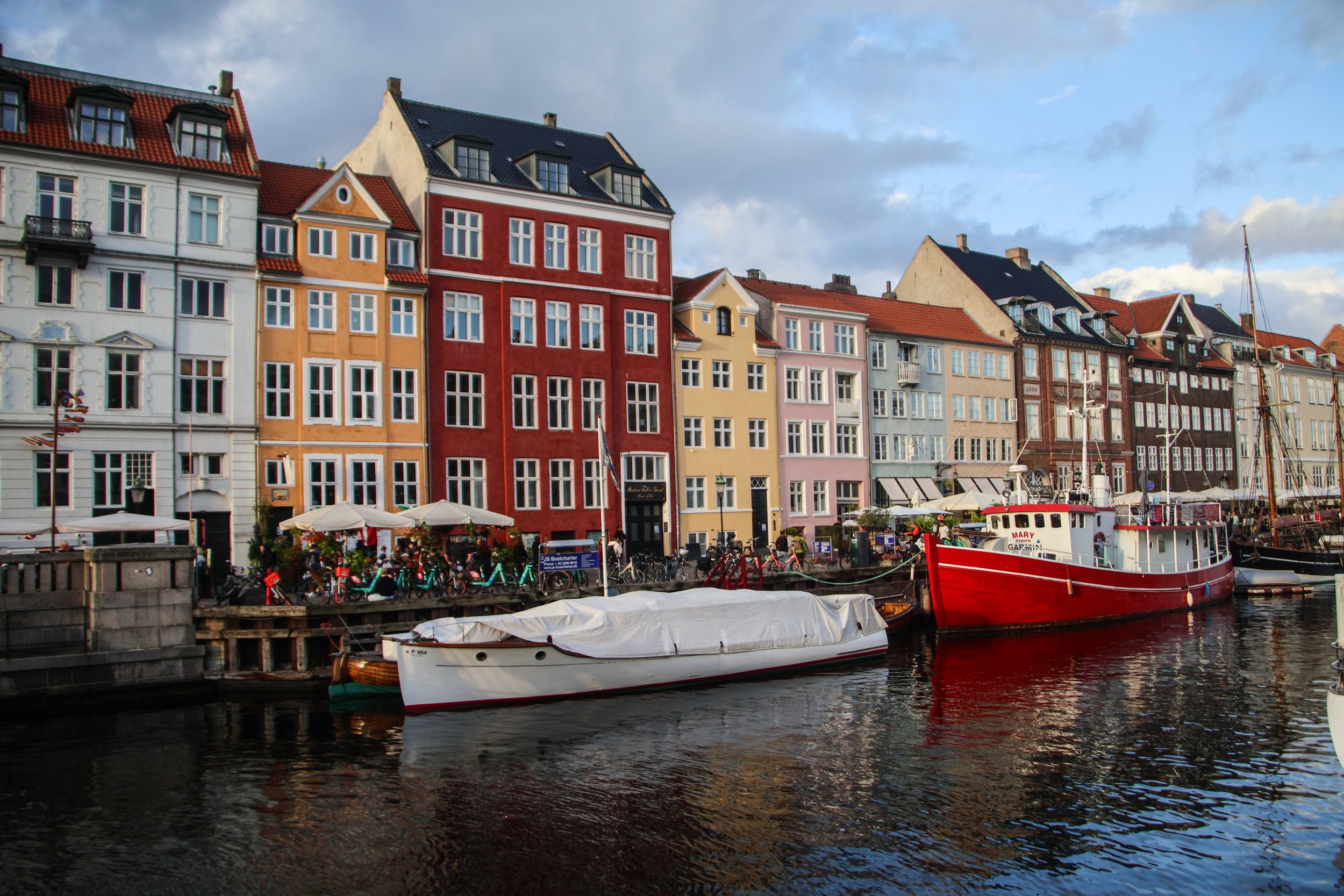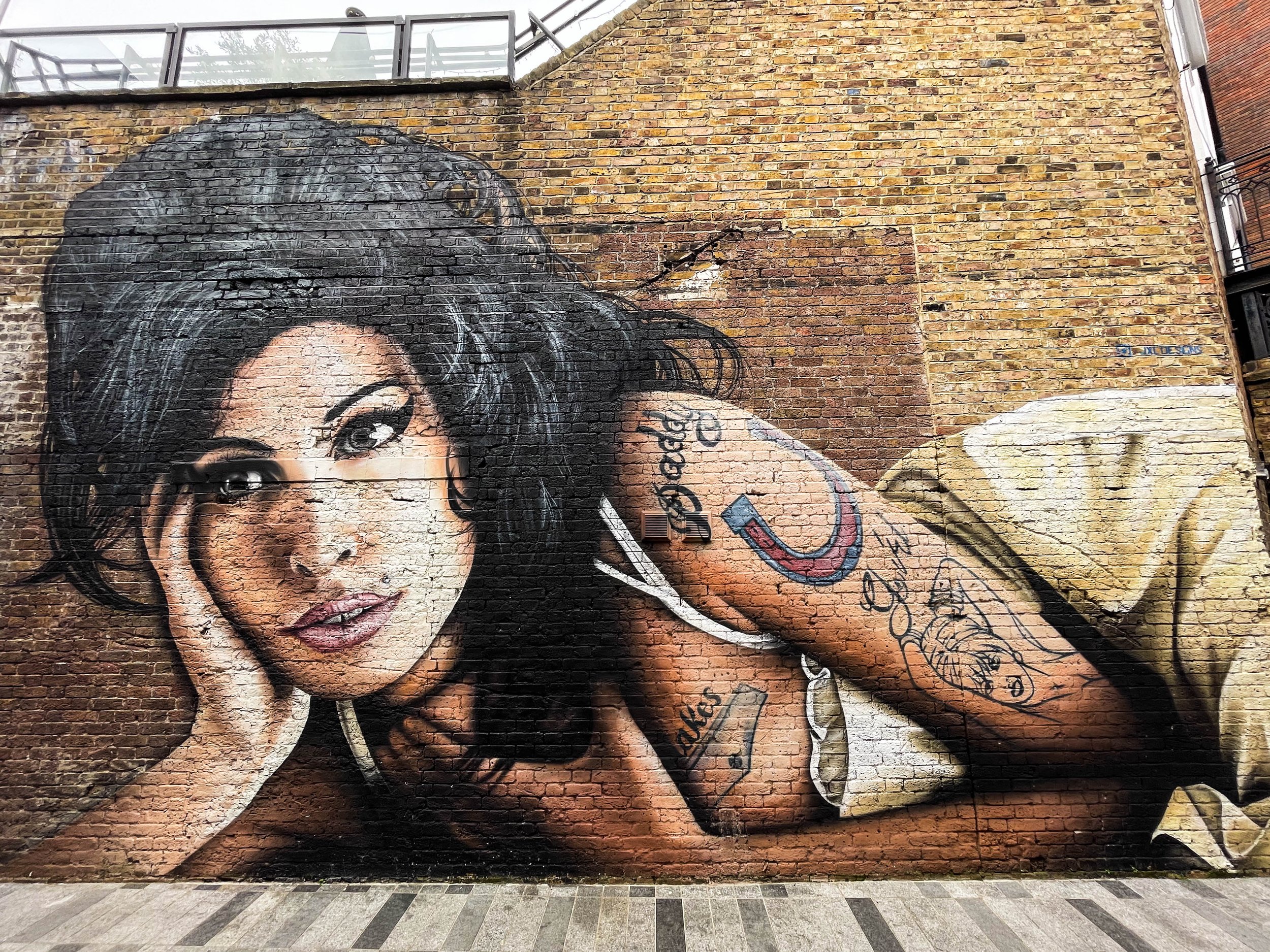I was excited to see some of Norway’s legendary mountains! Unfortunately, Freyr (the Norse god of good weather) was otherwise occupied during my visit. During our entire stay in Trysil, the landscape was covered in a thick fog and a cold, driving rain. It was perfect weather to cuddle up with a good book in a mountain cabin… but we had other plans.
Bright and early, we set out into the cold, foggy wetness to complete our hike. There were about 5 minutes where the sun managed to poke through the cloud cover, so I’ll show you those photos first. We were not in a particularly scenic part of the trail during that fleeting moment, but even then it was clear that—had we been able to see the landscape around us—it would have been incredible. The sun reveals a stunningly bright color palette on the grass around us.
As you know, today we’re in NORWAY, which is a new country for this blog! Unlike its Scandinavian peers, Norway is actually not part of the European Union, although it is a member of the Schengen area. Oslo is far and away the largest city in Norway, with a metro area population of 1.5 million people, although Oslo proper has less than half that number. For context, the next largest city in Norway by metro area is Bergen with about 460k people. And Norway overall has a population of 5.52 million people. That’s less than half the population of London, and is more than 7x smaller than the population of the Tokyo metro area. Not a big place, even by Nordic standards. But it’s definitely a beautiful place.
Here are a few fun-facts about Oslo…
While it might seem like just some quirky hippie commune, Freetown Christiania is actually a self-proclaimed micro-nation within Denmark that operates by its own set of rules. It’s got its own flag (shown here), and the approximately 1,000 people who live within its borders apparently do not think of themselves as being Danish, but rather, as “Christianites.”
But let’s go back to the beginning of this improbable story. I think context is key here in order for this to make any sense.
Copenhagen is an interesting example of how the center of gravity for contemporary, social life is often not in the historic city center. I think this is true in varying degrees in many cities across Europe, but what I understand from speaking with my Danish friends over here, is that this phenomenon is particularly decisive in Copenhagen. If you move to Copenhagen, most people will tell you that the best place to live is not Indre By, but other neighborhoods that are a bit further afield, a bit less dense, a bit less historic, and a lot less photogenic.
Today we’re going to focus on two such neighborhoods, which have a reputation for the being the “cool / trendy” areas in Copenhagen: Frederiksberg and Nørrebro.
Copenhagen (or, in Danish, København) is the capital city of Denmark. It is also the most populous city, with a metro area population of 2.1 million people, which is almost double the population of its next largest city, Aarhus. If you’ve never taken a moment to observe the geography of Copenhagen, you can do so on the map below; it’s actually pretty interesting. It sits on an island in the North Sea called Zealand—which is home to a whopping 40% of Denmark’s population!—right between Sweden and the peninsula that forms mainland Denmark. This stretch of water is known at the Danish straits, and it separates the North Sea from the Baltic Sea. Thusly, it is quite a consequential water way for trade with Poland, Finland, the Baltics, and Russia.
Camden Town is a vibrant little area in north London that is famous for—among other things—its rich history with London’s musical lore. This area has long been associated with London’s punk scene, and indeed you’ll still see some people walking around this area sporting 2-foot high mohawks and all kinds of punk stylings that strike one as being almost performatively contrarian. Camden had deep ties to the early punk movement in Britain, with bands like The Clash, The Sex Pistols, and The Ramones famously frequenting this area. Apparently the photo on the cover of The Clash’s debut album (the real ones will know) was shot here in Camden. Later on, bands like Joy Division and The Cure would play here frequently, but Camden’s most recent contribution musical lore was none other than Amy Winehouse. She actually lived here, and as such, this neighborhood’s already-crowded mural scene is now infused with her likeness.
This article marks a ‘first’ for Peter’s Big Adventure: this was the FIRST time that I tried to upload so many photos at once that SquareSpace cut me off. Apparently the limit for a single-batch upload is 250. 😂
So that should be a good indicator for what is to come.
Today we’re venturing into East London to visit BRICK LANE. In Volume 1 of this series in South London, I spoke to how much walking I had endured in order to piece that article together. At the time, it seemed to me (a recent arrival here) that London’s street art was quite decentralized, but I have been proven wrong many times over since publishing that article. There are dense clusters of murals if you know where to look. And thankfully, I have gotten some good pointers from people who know London a lot better than I do about where to find these clusters.
And we’re back with more of the beautiful game! And my quest to get to as many stadiums in London as possible continues, this time with Craven Cottage, where Fulham will host the mighty Liverpool in the 2nd leg of the EFL Cup semi-final. In the 1st leg, Liverpool beat Fulham 2-1. This match would decide who moved on to the final. This will be the smallest Premier League stadium I’ve yet visited, so it should be a good time.
This article is going to be a LONG one! And despite the length, this is still just the tip of the iceberg that is London’s vast collection of museums. I’ve heard that London actually has almost 200 museums! Honestly, I am museum-ed out even after these 9. So I’ll do my best to keep my writings on each of these short and sweet.
Established in 1753 in central London, The British Museum hosts upwards for 4 million visitors every year, and has 8 million historical and cultural artifacts on permanent display. It is, without a doubt, one of the largest and most famous museums in the world. In fact, by some measures, it is the largest museum in the world… and nowadays I think it’s safe to say that it’s also the most controversial.











